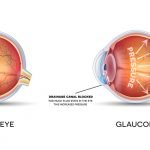Studies indicate that poor early nutrition is a primary cause of arthritis in both moose and humans.
A 50-year study of moose (those antlered animals, not the Loyal Order guys in funny hats) on Isle Royal in Lake Superior indicates that osteoarthritis may have its origins in poor nutrition. According to an article in The New York Times, the study involved the examination of numerous moose carcasses that showed, among other things, that these leggy critters are subject to arthritis. After examining some 1,200 carcasses (be assured, Bullwinkle J. Moose was not one of them), scientists found that more than 50 percent had arthritis and that the disease looks much the same in moose as it does in people. Arthritis affects the hips and knees of wild moose, making them especially vulnerable to their main predator, the wolf. Among humans, osteoarthritis also affects knees and hips, causing pain and debilitation (and making sufferers vulnerable to pharmaceutical predators).
Scientists involved in the study said that the evidence indicated that poor early nutrition was the main cause of moose arthritis. According to Dr. Rolf Peterson of Michigan Technological University, arthritic moose tended to be small as measured by their metatarsal bones, and small metatarsals correlate to poor early nutrition. The scientists were able to determine that the small moose were born during times of food scarcity, as a result of which their mothers had difficulty producing enough milk. They theorize that if the arthritis had been due to wear and tear, the moose would have had to walk further to find food when they were grown. But the evidence indicted that the moose had plentiful food as adults, leaving early nutrition as the most likely source of the problem.
There is significant evidence of a correlation between poor early nutrition and increased incidence of arthritis in human beings as well. For example, studies of the bones of 16th century Native Americans in the Southeast show an increase in the incidence of osteoarthritis after contact with the Spanish changed the Native American diet from fish and wild plants to one focused on corn. In fairness, the Spanish also vastly increased the workload for these people, which, it could be argued, may have contributed to arthritis. But the study showed that the Native Americans became smaller and more subject to anemia and malnutrition as a result of the dietary changes imposed on them and that this was a significant contributor to the increased incidence of osteoarthritis. The Times article also points to studies in Britain and in China that showed that low birth weight and poor in utero nutrition are linked to the later development of osteoarthritis (as well as other disabilities.)
The idea that carrying excess weight contributes to osteoarthritis is also being looked at anew as a result of the link between nutrition and the condition. No longer is obesity seen simply as creating extra wear and tear on joints and cartilages. Obesity is often fueled by a poor diet. Says Dr. Peter Bales of the University of California of Davis Health System, and authority on arthritis, “Poor diet results in inflammatory changes and damage in cartilage cells, which in turn lead to cartilage breakdown and the development of osteoarthritis.”
According to Dr. Bales, the proper diet can significantly reduce the pain and stiffness associated with the disease. And his diet of choice? The Mediterranean diet, of course.Why? It’s less acidic, reducing the release of free radicals that can damage joints and cartilage. Plus the diet’s emphasis on vegetables, whole grains, olive oil, fruits and fish can support cartilage growth and slow its deterioration.Bales also recommends limiting one’s intake of sugary and processed foods because they result in AGEs (advanced glycosylation end products). AGEs bind to the collagen in joints and cartilage rendering them more brittle. He says increased vitamin C intake is important (vitamin C is alkalizing and anti-inflammatory) as is supplementation with fish oil, glucosamine, chondroitin, MSM, and SAMe (S-adenosylmethionine). In addition, to Dr. Bales recommendations, I would also add supplementation with a formula containing avocado soy unsaponifiables, undenatured chicken collagen, ginger, cetyl myristoleate, and boswellia extract.
Around 1863, the German philosopherLudwig Feuerbach, wrote, “Man is what he eats,” which has come down to us as “you are what you eat.” And while Feuerbach had a spiritual meaning in mind, I can’t help but be struck by its literal relevance in the case of osteoarthritis. Both the type of nutrition one has as a child and the diet one eats as an adult have direct impact on the health or deterioration of the joints and cartilages in later life (as well as on the entire system). Whether moose or man, it seems, the effects of bodily wear and tear combined with genetic predisposition can be triggered or fended off by the dietary choices both we and our parents make.
:hc











